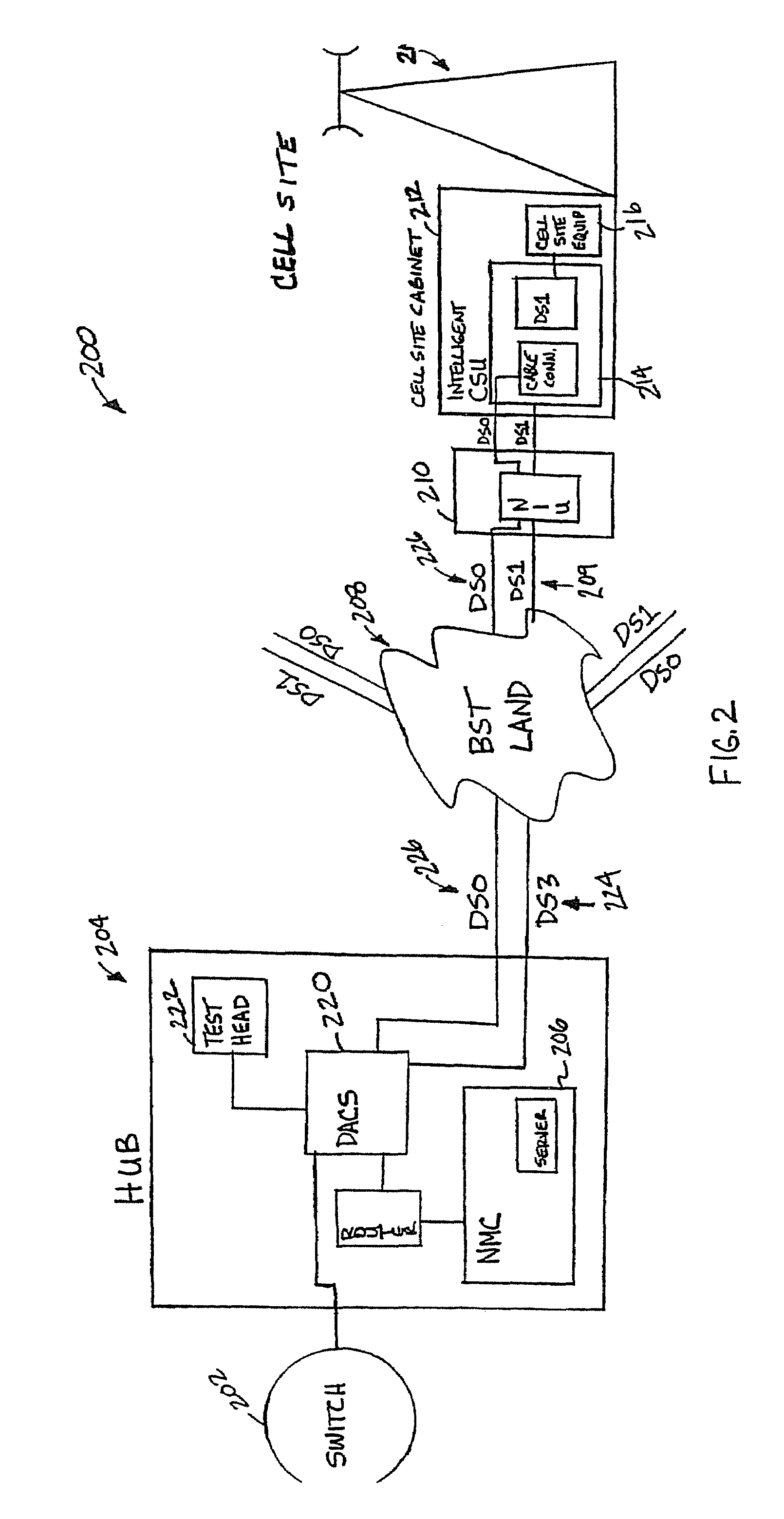Remote testing and monitoring to a cell site in a cellular communications network
- Summary
- Abstract
- Description
- Claims
- Application Information
AI Technical Summary
Benefits of technology
Problems solved by technology
Method used
Image
Examples
Embodiment Construction
[0024]Reference will now be made in detail to preferred embodiments of the invention, examples of which are illustrated in the accompanying drawings.
[0025]FIG. 1 shows a traditional cellular communications network 100. The cellular communications network 100 includes switches 102 that communicates with other switches located throughout the communications network 100, and a hub 104 having equipment adapted to communicate with the switch 102. Multiple switches 102 and hubs 104 exist throughout the network. A variety of network providers, such as, local telephone companies, long distance telephone companies and independent telephone companies can supply parts of the cellular network. A digital service, level 3 (DS3), also referred to as a T3, outputs 106 from the hub 104 and provides 28 1.544 Mbps circuits. A local network 107 translates the DS3 to a digital service, level 1 (DS1) channel 108 of 1.544 Mbps. The DS1 channel 108 couples to a Network Interface Unit (NIU) 110. The NIU 110 ...
PUM
 Login to View More
Login to View More Abstract
Description
Claims
Application Information
 Login to View More
Login to View More - R&D
- Intellectual Property
- Life Sciences
- Materials
- Tech Scout
- Unparalleled Data Quality
- Higher Quality Content
- 60% Fewer Hallucinations
Browse by: Latest US Patents, China's latest patents, Technical Efficacy Thesaurus, Application Domain, Technology Topic, Popular Technical Reports.
© 2025 PatSnap. All rights reserved.Legal|Privacy policy|Modern Slavery Act Transparency Statement|Sitemap|About US| Contact US: help@patsnap.com



